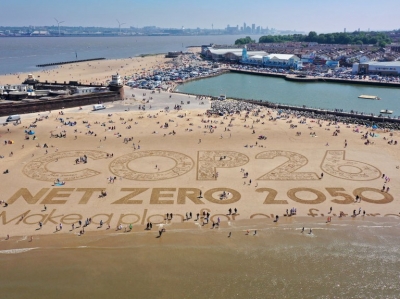
Leaders from across the globe gathered to work out a climate action plan during the COP26 summit at Glasgow, held between October 31 and November 12. One of the important announcements came from China and the U.S. as the two countries vowed to work together to accelerate climate action this decade. The two superpowers account for nearly 40% of all carbon emissions. They said they would achieve the 1.5C temperature goal set out in the 2015 Paris Agreement. The Summit witnessed many other commitments and pledges being made by countries and organisations to mitigate climate change.
COP stands for Conference of the Parties. It is a global United Nations summit about climate change and how countries are planning to tackle it. The first summit took place in 1995. This year’s summit is the 26th and is hence called COP26.
It was due to take place in November 2020, but delayed for a year because of the coronavirus pandemic.
Key aims for the conference included an increased global ambition on greenhouse gas reduction efforts to keep the temperature goals inscribed in the Paris agreement within reach, and increased global efforts on adaptation and climate financing.
Why was COP26 important?
The world is facing the biggest threat from climate change, which is primarily caused by the emission of greenhouses gases from burning of fossil fuel. Global warming causes icecaps to melt and sea levels to rise. We are seeing extreme weather events taking place around the world – including heatwaves, floods and forest fires. There is an urgent need to take action to address this scenario. This can be achieved only with the cooperation and collective efforts of all the countries.
COP26 was viewed as the successor to COP21 where the Paris Accord 2015 was signed, arguably the greatest success in recent years.
COP26 aimed to address what has and hasn’t been achieved since 2015, while also setting concrete plans to reach the Paris Agreement targets.
What is Paris Agreement?
In 2015, world leaders pledged in Paris to try to keep global temperature increase well below 2 degree C and to try to limit it to 1.5 degree C through sweeping emissions cuts.
- Nations agreed to reduce the amount of harmful greenhouse gasses produced and adopt renewable energy such as wind, solar and wave power.
- The Paris Agreement reaffirmed that developed countries should take the lead in providing financial assistance to poor and vulnerable ones.
What are Nationally Determined Contributions?
The Paris Accord set a target for limiting global warming but left it up to each country to submit its own emissions reduction targets, known as Nationally Determined Contributions.
Part of the plan was for countries to regularly review and, if necessary, update their targets to ensure the Paris goal is met.
How will countries be made to meet their pledges?
Only a few countries are making their pledges legally binding. Others will have to be self-policed. However, all are required to submit their NDCS every five years.
What are some of the highlights of COP26?
- China and the United States vowed to work together to accelerate climate action this decade. A coalition of 19 countries including Britain and the United States agreed to create zero emissions shipping trade routes between ports to speed up decarbonisation of the global maritime industry. Shipping, which transports about 90% of world trade, accounts for nearly 3% of the world’s CO2 emissions.
- A group of 50 countries committed to develop climate-resilient and low-carbon health systems in response to growing evidence of the impact of climate change on people’s health. Forty-five of these countries also committed to transform their health systems to be more sustainable and low-carbon.
- More than 100 countries, representing about 85% of the world’s forests, promised to stop deforestation by 2030.
- A pledge to cut 30% of current methane emissions by 2030-was taken by more than 100 countries. . More than 40 countries agreed to shift away from coal.
- Some 450 financial organisations agreed to back “clean” technology, such as renewable energy, and direct finance away from fossil fuel-burning industries.
- The summit urged countries to phase out fossil fuel subsidies.
- The countries were reminded to stop the planet heating beyond the critical 1.5 degree C threshold. Global greenhouse gases emissions must drop 45% by 2030 from 2010 levels, on the way to halting their rise altogether by 2050, it was urged.
- Developed countries were urged to “urgently scale up” aid in the form of grants (and not loans) to help countries adapt to climate impacts.
Picture Credit : Google




